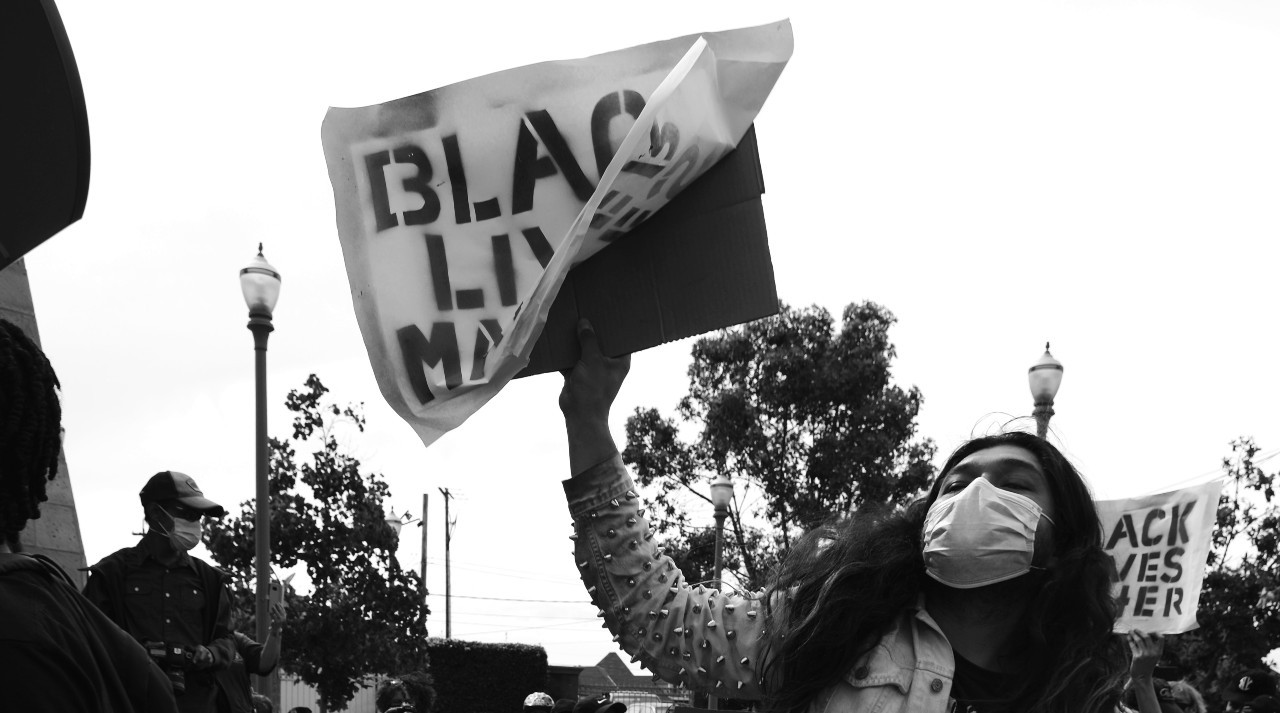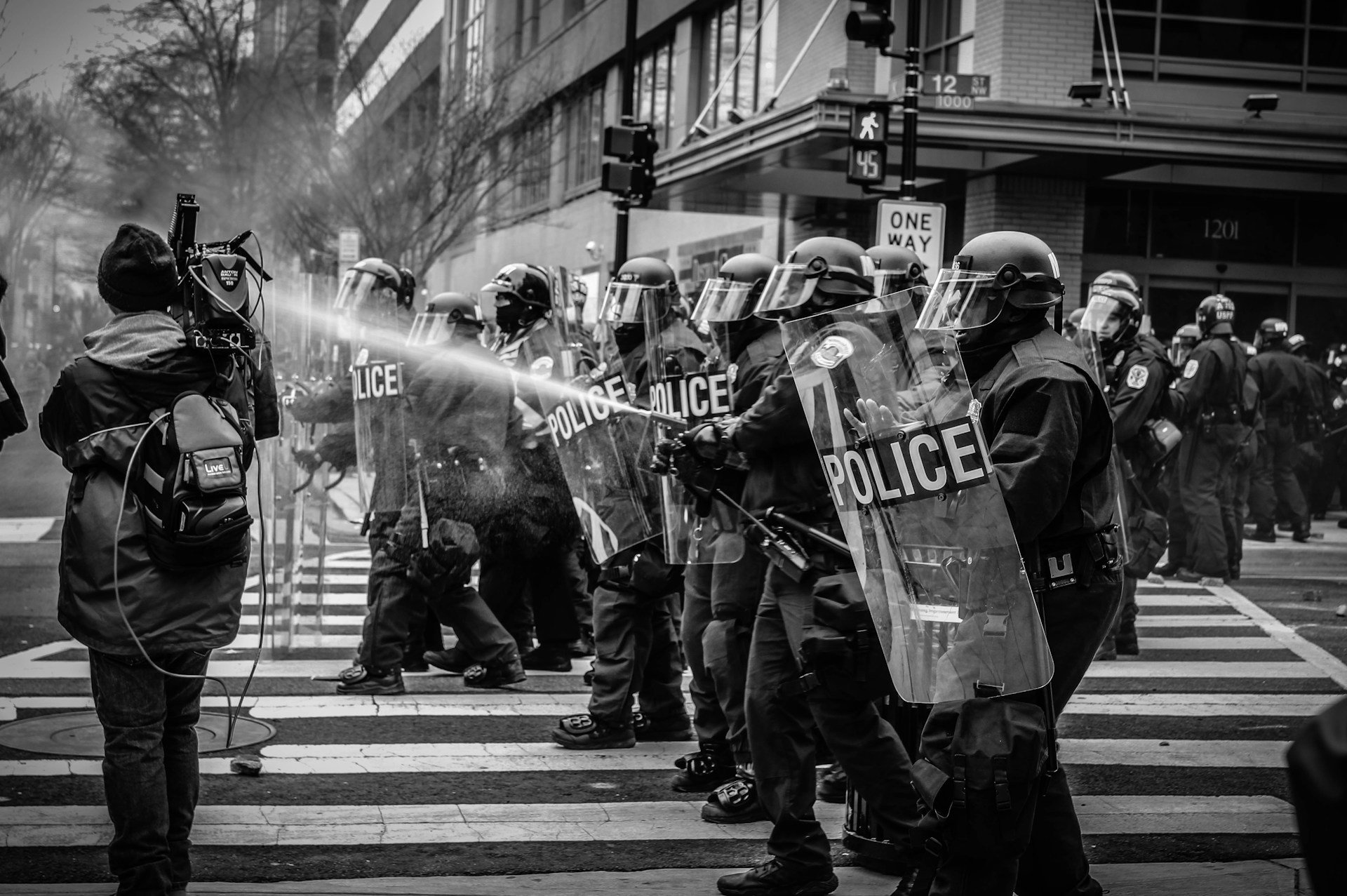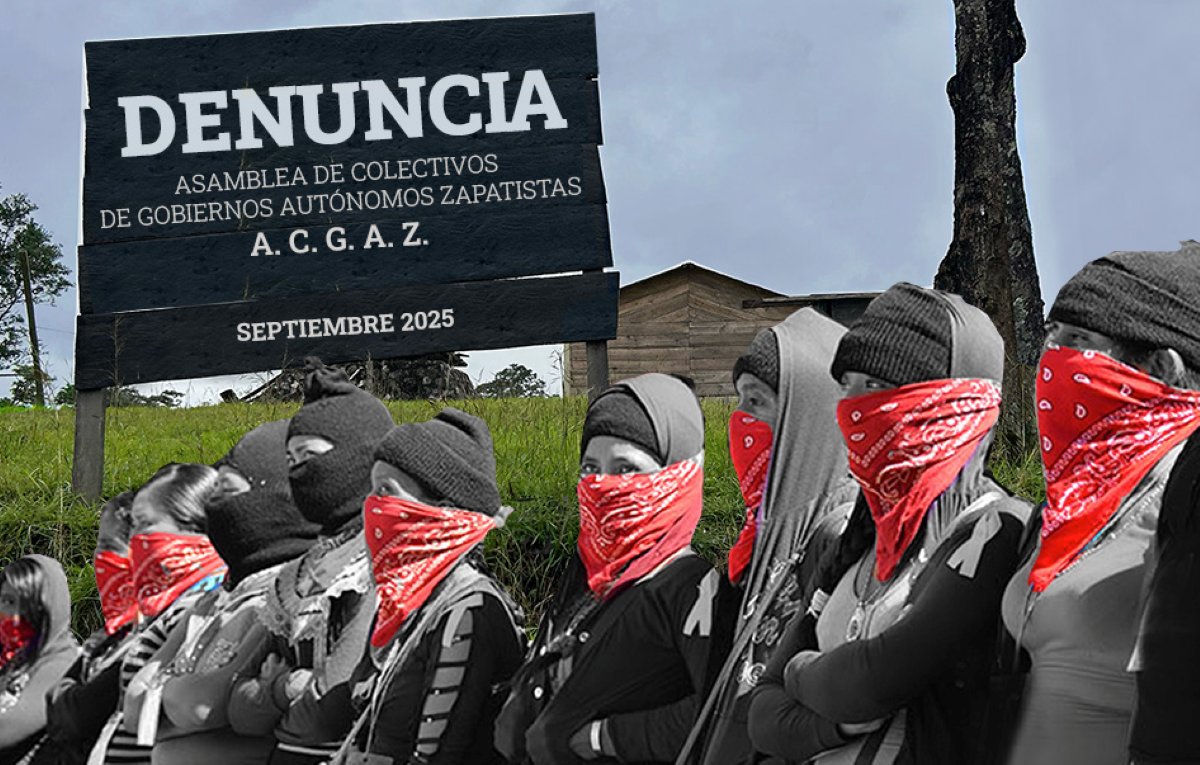Filed under: Analysis, Anarchist Movement, Featured, Police, The State, White Supremacy

A critical analysis of the mass rebellions that took place following the police murders of George Floyd and Daunte Wright.
By Shemon and Arturo
We have tried to develop a new science, politics, way of being and seeing since the George Floyd Uprising. We have tried to leave behind the old ways of the left and have embarked on a new journey. 1968 is far behind us and we can no longer see it in the rear view mirror. Instead, it is the George Floyd Uprising that is in our rear view mirror. In practice, the divisions within the ultra-left seem meaningless in the current moment of revolt. For those on the ground, there is simply the division between those who are loyal to the spirit of revolt and everyone else.
To the current era of riots we must add the Daunte Wright uprising, which began on April 11th in Brooklyn Center, a suburb of Minneapolis, and saw two nights of looting and property destruction across the Minneapolis-Saint Paul metropolitan area, and over a week of confrontational protests in front of the Brooklyn Center Police Station. Some people threw bottles, bricks, and chunks of concrete, and shot fireworks at the police and National Guard, while openly calling for people to burn down the police station, but by noon on the second day police had already erected concrete barricades and a large chain-link fence around the building, which protesters were unable to breach. At the height of the riots on the first night, the front door of a police station was shot up in neighboring Brooklyn Park. Solidarity riots in Portland also resulted in considerable property destruction, including setting fire to a police union hall and Apple store.
It’s a party here now. pic.twitter.com/O0GYamGmxw
— Evan Frost (@efrostee) April 21, 2021
Our task is not only to document the riots, but by following the struggle of the proletariat carefully, to develop a new set of politics born not of 1791, 1917 or 1968, but from George Floyd’s grave. But this time it is not only the tree of liberty that grows, but a new politics, theory, and way of life that clashes with the forces of law and order.
This is not a report back. This is the intellectual production of the proletariat continuing to force new ideas upon us. We are merely the scribes of what brave proletarians continue to do in practice.
We are writing with spring upon us, following the conviction of Derek Chauvin, and a new string of police murders across the country. Things are moving fast and what we say here could become outdated in a matter of days. We hope the escalating struggle will produce new theories and ways of acting.
Growing Repression
Local police, State Troopers, National Guard, FBI and other law enforcement agencies across the country are actively preparing for more riots, which limits how proletarians are able to fight. In NYC, Los Angeles, Philadelphia, and especially in the Minneapolis area, including Brooklyn Center, the state has regrouped in full force to militarily squash any chance of another national uprising. This was to be expected. With the exception of the Daunte Wright Uprising, the proletarian has not come out in full force so far this year. It is certainly impressive that in the midst of an occupation by the National Guard, masses of proletarians defied a curfew and engaged in diffuse looting (on foot and by car) in Brooklyn Center, and throughout the Twin Cities region. But it is also undeniable that there were much less people in the streets fighting the cops in the way people were last year. While there was a current of proletarian youth throwing rocks and bricks at the police in Brooklyn Center, these people were a small minority within the crowd.
This leaves the hardest core of militants in a precarious situation. Proletarians breathed the tear gas, drank the Henny, and lived for a few months last summer, but they must carefully assess the situation that is unfolding. It is one thing to riot with thousands of people in the streets throwing down and with the state caught off guard. It is another thing entirely to act the same way with much smaller, less confrontational crowds and a state that has marshalled all its resources in order to repress us. The risk of this argument is to accept passivity, return to meaningless protests, but the inverse scenario is that the best fighters get captured and slammed with long prison sentences.
National Guard now to the front of protest line at Brooklyn Center PD. pic.twitter.com/C4oSgMUl94
— Mark Vancleave (@MDVancleave) April 12, 2021
The path forward is not clear to us, but we must nonetheless recognize the changing terrain, not only to live to fight another day, but to act in more tactical and strategic ways. We hope that the partisans of revolt are having sensible and calm conversations in their respective cities and towns, respecting the differences that exist among them, and keeping in mind that the state is bearing down on the proletariat.
We must be careful though not to reduce the limits of the riots only to state repression. While some of the limits are a product of the diverse efforts of counterinsurgency, there is also the issue of the internal limits of the riots themselves, which have yet to be parsed out.
Proletarian Atoms
Last summer was unique because the proletarian momentarily solved the composition problem by producing a collective response to the pandemic, police violence, and growing class inequality. We can see how unique a collective response is by how difficult it is to repeat such practices again and again.
The proletariat has no loyalty to collective action and does not fetishize it. Riots, like strikes, are taken up in one moment and abandoned in another. It’s possible that in some places the collective actions of the George Floyd uprising might be shifting into more atomized forms of resistance. This potentially demonstrates another kind of response from the proletariat, one that is so atomized, dangerous, and illegal that most people will be sidelined by it. It’s not being reported in the news, but this is what we are seeing in Chicago where in the last month there have been five different cases of snipers shooting at police. Then on the 18th, immediately following the Daunte Wright uprising, two Minnesota National Guard members were shot in a drive-by shooting in Minneapolis. It’s hard to tell for sure, but if this video of a Black man assaulting a New York cop on the 17th is a sign of things to come, we might see Black proletarians, at the individual level and in small units, fight back at great cost to their personal safety. Most people will have no way of aiding them, leaving a weak trace of struggle.
More atomized actions ultimately express a more isolated response to the police, one that is much more difficult for broader layers of the proletariat to interact with than uprisings or riots. But this dynamic between atomized and collective action is not linear, it is reciprocal. It is oscillation between these two forms of proletarian struggle, instead of dichotomy, that describes this dynamic.
Which Lives Matter
How do we understand the different responses to the murder of 6 Asian women in Atlanta, the murder of Adam Toledo in Chicago, Peyton Ham in Maryland, and Robert Delgado in Portland? Here is the interesting paradox: Considerable sections of the white, Latinx, Indigenous, and Asian proletariat have rioted when Black proletarians are murdered by police, but there has not been the same level of revolt for the non-Black victims of police violence. Latinx people were part of the Daunte Wright riots in Brooklyn Center, but did not riot for Adam Toledo in Chicago. How do we understand this?
we out here!!! #StopAsianHate pic.twitter.com/hVv2X9FH43
— Raleigh Antifascists (@oakcityAFA) April 4, 2021
If revolt does not understand itself in this country in the language of class, it certainly understands itself in terms of race. And it is here where the peculiarity of what it means to be Black comes to the front. As the most abject condition, it holds a particular moral and structural position in the imagination of society, shaping what other racialized groups do or don’t do. So what happens is that many people fight the police through this representation, but fail to see how their own struggles can also lead to their own riots. If the BLM movement is able to break out of its ethnic based framework, if Latinx people can figure out how to riot for Latinx people (as Puerto Ricans did in Lancaster on September 13th, 2020, for Ricardo Munoz), if white people can figure out how to riot for white people (as whites did in Portland last week for Robert Delgado), and so on, while also tying these revolts to the Black proletarian revolt, then we will enter a new period of struggle.
From George Floyd to Duante Wright
What is the relationship between the Daunte Wright Uprising and the George Floyd Uprising? It is tempting to make a comparison between the two. But perhaps instead we have no choice but to see the Daunte Wright uprising as an entirely new dynamic. In between the two uprisings Biden was elected, January 6th happened, and there were nonviolent protests against the murder of 6 Asian women. Have the threads been broken between last summer and this spring? If not, what connects last summer to what is unfolding?
Despite curfews + the National Guard being brought in to put down looting, demonstrations continued for the second night following the police murder of #DaunteWright and spread to cities across the US. Here's our roundup of the action. #BlackLivesMatter https://t.co/RmOn0wubBt
— It's Going Down (@IGD_News) April 13, 2021
Winter felt like a pair of scissors that cut the threads between summer 2020 and spring 2021, but that is too simple of an explanation. Just as today’s revolutionaries are trapped in yesterday’s revolutions, many militants are trapped in last year’s uprising. This is understandable, but it results in not seeing what is unfolding in front of us, on terms that are different.
It is too early to define the exact relationship of the George Floyd Uprising to the Daunte Wright Uprising. There is an obvious continuity in the ongoing struggle against the police. Even with the conviction of Derek Chauvin, the police will keep harassing and murdering Black people, and the Black proletariat will keep fighting back in one way or another. Our point is that we shouldn’t be dogmatic in our comparisons between what happened last summer and what is happening now. At the same time, it is too early to forget the George Floyd Uprising. It remains seared into our memory. We will have to maintain this tension for some time, conducting a balancing act between remembering and forgetting, looking for connections, and new lines of flight.
Oscillations
Last summer saw the emergence of a dichotomy between the daytime protests and the night time protests. The former was more middle class, mostly white, and nonviolent, while the latter was more proletarian, very multi racial, and rooted in riots. Can this framework still hold and be loyal to this moment?
A popular Instagram post by Ben Passmore says “But if the uprising after George Floyd’s murder changed anything it was not enough to save Duante Wright’s life.” It goes onto say “I heard myself say something I’d been scared to admit…This isn’t working. The fact is Black people will keep being killed, like we have for centuries, and if prayer or voting or protests could change that they already would have…”
Thousands of National Guard troops have flooded our streets. The police are still killing on average 3 people per day. States across the US are passing laws criminalizing protesting. The system hasn't reformed itself since George Floyd, it's doubled down. #DerekChauvinVerdict pic.twitter.com/qQ7HlvTsDj
— It's Going Down (@IGD_News) April 20, 2021
While more riots may seem like an obvious response to many revolutionaries, the proletariat has no special commitment to riots. After all, it was the proletariat which fought and took the brunt of the repression last summer. Casual rioting is not an option. If we can think of the proletariat as a conscious being, then the proletariat uses every tactic, every dirty trick in the book, against the forces of law and order. To return to Ben Passmore’s admission: The riots have not stopped the murder of Black people and other people, so rioting alone may not be the solution we think it is. Portland is an excellent case study of this limit.
So while we certainly don’t need to turn our back on riots, we don’t need to fetishize them either. It’s important to consider this dilemma, because it is easy to conclude that the proletariat has given up, does not care, or is defeated. Whether one sees the riots as useless, or whether one sees them as the be-all-end-all, neither of these explanations are robust enough to describe what is happening. They can also prevent us from seeing other types of resistance that are developing, some which we might not be able to participate in, and might be dead-ends, but which are forms of resistance nonetheless. Nor does this mean we can sidestep the question of proletarian defeat or the end of a cycle of struggles, but it seems too early to write an obituary.
The Destiny of Frontliners
The concept of frontliners originally came from Hong Kong and Chile. Arguably it was countless activists watching the battle at the Justice Center in Portland in August of last year that popularized the frontliner concept in the United States. Last summer, many activists bought all kinds of riot gear, and plenty of black clothes, and it appeared that a new militancy was arising in the streets. But what we are seeing today is something else—people dressed in frontliner gear who are actively opposing the riots. It was too early to see this last year, but some of the writing was already on the wall when in Rochester, NY, during the Daniel Prude riots, frontliners did not fight back when tear gassed and pepper sprayed, but largely took a beating from the Rochester Police, like any other group of middle class activists.
It appears that a growing current among the fronliners is one of mere aesthetics. Some fronliners in Brooklyn Center who were dressed in all black and wore body armor played a conservatising role, telling people not to throw things at the police and kicking away the chunks of concrete and brick that people were breaking up and gathering them in the street. Should revolutionaries fight for the soul of frontliners, or should we cede this tactical terrain to the militant looking nonviolent activists who allow themselves to take punishment from the police? Are frontliners revolutionaries themselves? As circumstances change, will frontliners play a more radical role? Or will they become more conservative this summer?
This shows how things imported into the USA change quickly. It shows how what was radical yesterday, can quickly become conservative today.
What is viscerally observable is how the confrontation in front of the Brooklyn Center Police Station looked like Portland at the Justice Center. It begs the question whether activists are LARPing Portland. But before we bust out the jokes, perhaps it is a reflection of the limits of the moment more than mere LARPing. After all, at least on a technical level, today’s activists are more prepared to deal with tear gas and other police weapons. Perhaps thinking in terms of dichotomy is not helpful here, but once again, a matter of oscillations, rhythms, and pulses.
Conclusion
At the end of the day, we are loyal to the spirit of last summer, not only because of memory, but also because proletarians are still being murdered by police, and because the entire world is in revolt. But this loyalty must have a firm grasp on the changing terrain, which is not the same as the terrain of the 1960s, nor that of last summer, but an unfolding landscape that we make through class conflict and which the state shapes in response.
To drive the point further, our loyalty is to the militant wing of the proletariat which fought last summer and last fall and which continues to fight today, even if it increasingly fights alone. These proletarians still walk the streets and live in a world where the 3rd Precinct was burned down, and where proletarians are still being hunted down by police.
photo: Mike Von via Unsplash





